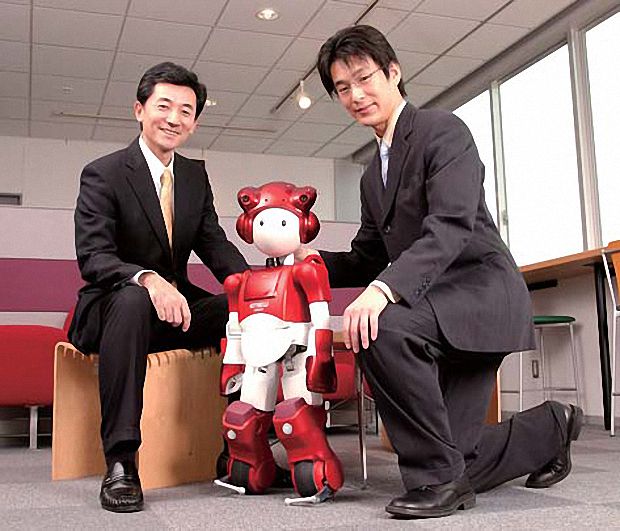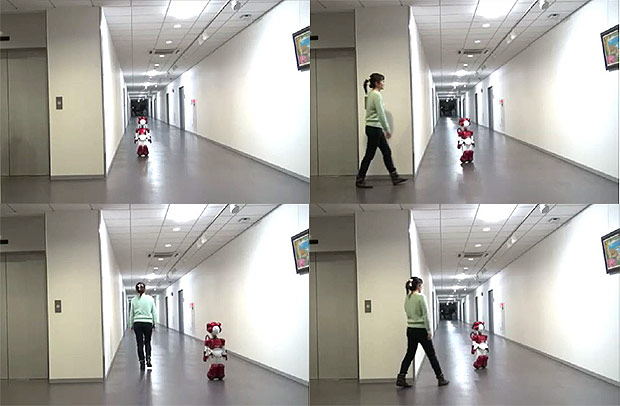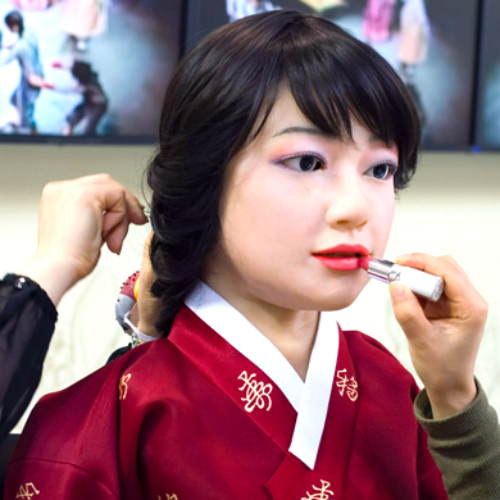Hitachi EMIEW
First unveiled in 2007, Hitachi’s adorable little service robot EMIEW 2 has been gradually improving over the years. Standing 80 centimeters tall and weighing 14 kilograms, the robot is rather unusual in that it moves on a combination of legs and wheels, a system that works a bit like roller skates. Recently Hitachi announced that the robot’s software is able to understand its environment better than before, allowing it to mingle more harmoniously among workers in busy settings like offices and hospitals.
Previously, EMIEW 2 (Excellent Mobility and Interactive Existence as Workmate) used digital maps pre-stored in its memory to drive around rooms, corridors, and other spaces. And to avoid collisions, it relied on its sensors to detect people and obstacles in real-time, automatically changing direction and reducing its speed (from a maximum of 6 km/h). But Hitachi engineers felt that, even with its cameras and a laser range finder, the robot needed to be more aware of its environment in order to prevent accidents.

Now EMIEW 2 still relies on maps of its surroundings, but its navigation software has a new feature: It uses designated zones that make the robot change its speed and direction. For example, if people frequently pop out of a corner unexpectedly, the robot knows it should slow down and alter its path upon approach. Or if a door is never opened, the robot knows it can speed on by. And if necessary, the robot can avoid high traffic areas altogether, preventing it from becoming a nuisance to workers. The software identifies potential “hotspots” based on previously recorded activity between the robot and its environment and updates itself automatically, learning where it needs to make adjustments to its normal navigation paths.

Besides delivering refreshments or locating and fetching objects for busy office workers, Hitachi suggests the robot’s new mapping feature could expand its repertoire to guided tours or guard duty. The company hasn’t said when it plans to make EMIEW commercially available, but if it needs to do some more tests in a different setting, IEEE Spectrum editors would welcome the cool little robot as a coworker anytime.
source: www.spectrum.ieee.org
You might also like
EveR
EveR is a series of female androids developed by a team of South Korean scientists from the Korea Institute of Industrial Technology in Korea University of Science and Technology. The
AI Brain Patterns
Researchers from places such as Korea Advanced Institute of Science and Technology, the University of Cambridge, and many other institutes are currently stating that our general and practical understanding of
Will You lose Your job because of robots?
Millions of low –paid workers replaced by robots. That can be pretty scary news. Who will lose job first? Whose job robots and androids can do better?



